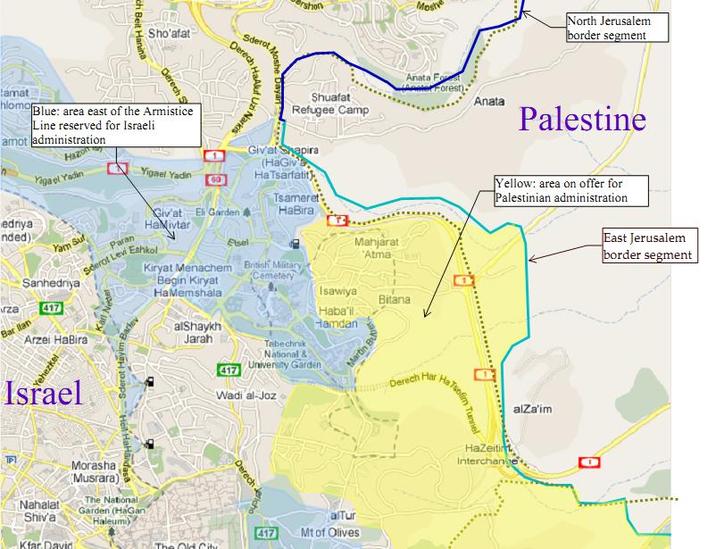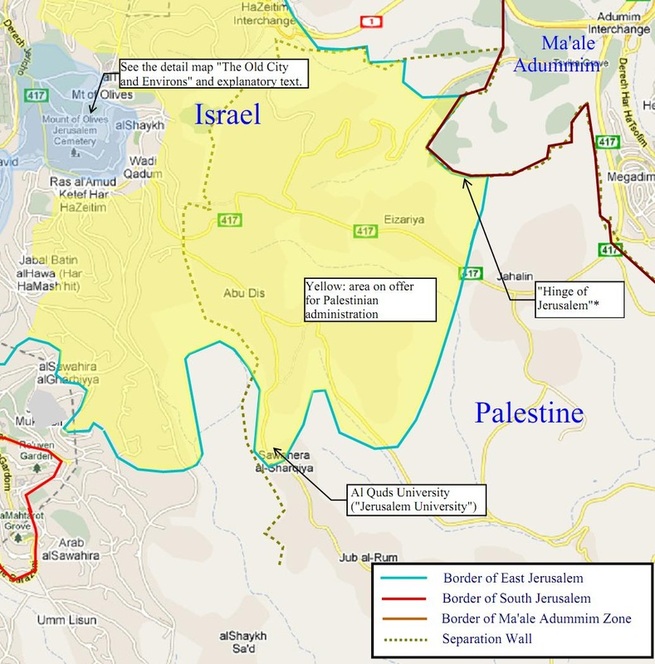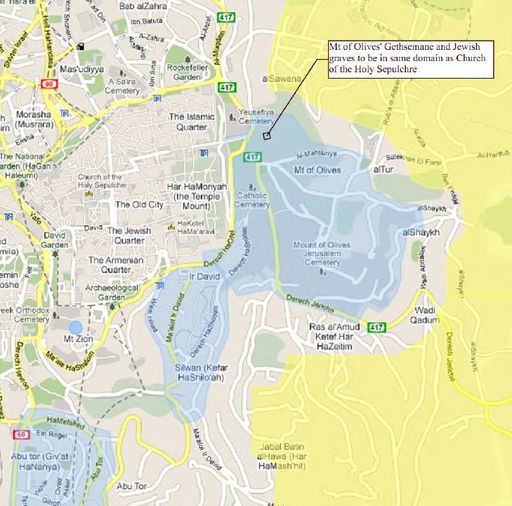- Home
- About
- General Issues
- Maps
-
Position Statements
- 2011 >
-
2012
>
- Time to Negotiate the Northern and Southern Sectors of the Israeli-West Bank Border
- President Peres and Dr. Ashrawi: Thank You for Staying on Track
- Playing the Victim Card Will Not Bring Peace
- Negotiations By the Parties
- The World Should Help the Palestinian Hunger Striker
- ...and only afterwards move to discuss the topic of Jerusalem
- A Question of Accountability
- Israel Twisting in the Wind
- Netanyahu: Too Big for His Britches
- Netanyahu's "Israeli Comfort"
- How Shaul Mofaz Can Jump-Start the Peace Process
- Netanyahu on the Brink
- Time for Taking Stock
- Israel in Wonderland
- Whatever Happened to the Quartet?
- The Palestinians Want to Negotiate
- A Time for Hope and a Call for Restraint
- Israel Can Win in Gaza, But Not Now
- Congratulations to the New State of Palestine!
- Security and Borders: Both Required for Peace
-
2013
>
- It Is Up to Israel to Restart Peace Negotiations
- Israel and Palestine: Changing the Terms of Agreement
- The Knesset Bill to Increase the Number of Women that Elect the Chief Rabbis Is Important for Jewish Women
- Proposal on Governance of the Holy Basin
- Time for Netanyahu to Reach Across the Aisle
- Tzipi Livni's Challenge
- Women Should Be Free to Pray at the Wailing Wall
- Proposed Highway through the Jordan Valley Will Backfire on Israel
- 2014 >
-
2015
>
- We Should Applaud Herzog and Livni for Reclaiming Zionism
- The Next Israeli Government
- West Bank Citizenry and Receipt of Individuals of Palestinian Origin
- What Next for Israel?
- Palestinian statehood
- Mischief in the Trade Legislation would Hinder Progress
- What Next for America?
- Could American Firms Choose to Gradually Disinvest from Israel?
- Boycotting Israel is not anti-Semitism
- 2016 >
- 2017 >
- 2019 >
- 2020 >
- 2023 >
- 2024
- Resources
- About the Authors
Jerusalem -- Eastern Areas of Focus
_No
peace agreement is possible without resolving the issue of East
Jerusalem. Our proposed border is put together in sections for the
purpose of simplifying some of the many complicated issues for the
Northern West Bank and Southern West Bank, and we have suggested
parameters for managing the issue of settlements. All this is to enable
the negotiations to focus on East Jerusalem. Therefore, rather than attempting to draw a firm and fixed border for the eastern areas of Jerusalem, we have identified the eastern edge of what can be regarded as the Greater Jerusalem Metropolitan Area, and invite the representatives of Palestine and Israel to negotiate the disposition and management of this area.
Our experience in Israel and Palestine is that generally people want to be able to move freely without restriction. The borders around Jerusalem, whatever they might be, jut into the very heart of Palestine. Those borders need to be managed with an eye toward what would make life easier for women and children, which means agreeing on an approach that focuses on allowing people to move easily.
Our experience in Israel and Palestine is that generally people want to be able to move freely without restriction. The borders around Jerusalem, whatever they might be, jut into the very heart of Palestine. Those borders need to be managed with an eye toward what would make life easier for women and children, which means agreeing on an approach that focuses on allowing people to move easily.
_*See discussion of Ma’ale Adumim
_
New trolleys and train routes in Jerusalem are indicative of the desire of many in Jerusalem to have one community. If that is the case, then roads and services in Arab areas of the city must be improved to equal the standards of West Jerusalem. This will occur as the spirit of generosity grows and, once the border is fixed, resources are freed up to improve housing and infrastructure.
The area shaded in yellow we believe could live at peace in either state, and we ask the Israeli Knesset and the Palestinian Authority to negotiate whether all or part of this area will (1) be within Jerusalem, (2) constitute a separate Palestinian city of East Jerusalem, or (3) constitute an area of Jerusalem under joint administration. If a zone of joint Palestinian–Israeli administration is set up for the Arab neighborhoods and towns of East Jerusalem within a united city, other Arab communities not shaded yellow but contiguous to it, such as those on the Mount of Olives, Wadi al-Joz and Shaykh Jarah, could be added to the zone.
The area shaded blue signifies those areas east of the Armistice Line that we believe should remain within Jerusalem in the event that all or part of the yellow-shaded areas are divided off into a separate Palestinian city. It is an area populated by Jews and/or essential to the geographic contiguity of Jerusalem.
We believe that Israel will consider good-faith requests for Arab East Jerusalem. Borders may not be required in the form of fencing or walls but instead may be administrative. We believe the environment will allow for a reduction of check-points and that check-points may be relocated to specified borders or border locations.
The peace of Jerusalem will not be secure without continual cooperation between Israel and Palestine. We ask the Knesset and the Palestinian Authority to put down their disagreements and conference regularly on the management of Jerusalem.
New trolleys and train routes in Jerusalem are indicative of the desire of many in Jerusalem to have one community. If that is the case, then roads and services in Arab areas of the city must be improved to equal the standards of West Jerusalem. This will occur as the spirit of generosity grows and, once the border is fixed, resources are freed up to improve housing and infrastructure.
The area shaded in yellow we believe could live at peace in either state, and we ask the Israeli Knesset and the Palestinian Authority to negotiate whether all or part of this area will (1) be within Jerusalem, (2) constitute a separate Palestinian city of East Jerusalem, or (3) constitute an area of Jerusalem under joint administration. If a zone of joint Palestinian–Israeli administration is set up for the Arab neighborhoods and towns of East Jerusalem within a united city, other Arab communities not shaded yellow but contiguous to it, such as those on the Mount of Olives, Wadi al-Joz and Shaykh Jarah, could be added to the zone.
The area shaded blue signifies those areas east of the Armistice Line that we believe should remain within Jerusalem in the event that all or part of the yellow-shaded areas are divided off into a separate Palestinian city. It is an area populated by Jews and/or essential to the geographic contiguity of Jerusalem.
We believe that Israel will consider good-faith requests for Arab East Jerusalem. Borders may not be required in the form of fencing or walls but instead may be administrative. We believe the environment will allow for a reduction of check-points and that check-points may be relocated to specified borders or border locations.
The peace of Jerusalem will not be secure without continual cooperation between Israel and Palestine. We ask the Knesset and the Palestinian Authority to put down their disagreements and conference regularly on the management of Jerusalem.
_The Old City and Environs_We deliberately did not assign ownership of
the Old City because we believe that access to the holy sites should be
open to Israelis and Palestinians alike. The Damascus Gate is not
shaded blue, indicative of our desire that Palestinians have
unrestricted access through that route, just as Jews have unrestricted
access through the Jaffa Gate.
The Mount of Olives is shaded blue out of respect for Christians, for whom the experience of retracing the route of Jesus’ Passion from the Garden of Gethsemane to the Church of the Holy Sepulchre should not require passing through a border, as well as out of respect for the large Jewish cemetery on its slopes. But we did not shade the Muslim Yuseifa cemetery that runs along the eastern wall of the Old City, to preserve Palestinian access. We assigned to Israel its archeological patrimony in the City of David, which Israelis view as their cultural heritage. Concerning Christian holy sites, we would ask that the Papal See, authorities of the Orthodox churches, and the World Council of Churches be consulted. |



